Electric Power Generation, Transmission, and Distribution eTool
Illustrated Glossary » Distribution Systems
A distribution system originates at a distribution substation and includes the lines, poles, transformers and other equipment needed to deliver electric power to the customer at the required voltages. Customers are classed as:
A distribution system consists of all the facilities and equipment connecting a transmission system to the customer's equipment.
A typical distribution system can consist of:
- Substations
- Distribution Feeder Circuits
- Switches
- Protective Equipment
- Primary Circuits
- Distribution Transformers
- Secondaries, and
- Services
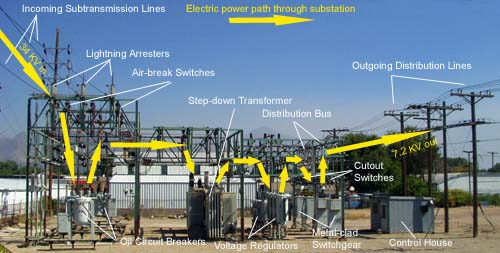
The following are examples of distribution systems components. Collectively they constitute a typical distribution system. These typically deliver voltages as high as 34,000 volts (34 kV) and as low as 120 volts.
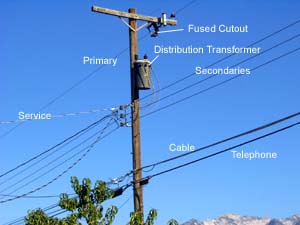

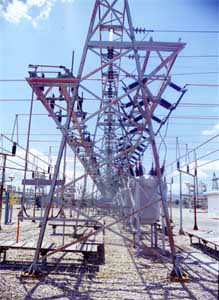



Additional information:
- The Lineman's and Cableman's Handbook, Shoemaker, T. M., Mack, J. E., Tenth Edition 2002, McGraw-Hill.
Most industries need 2,400 to 4,160 volts to run heavy machinery and usually their own substation or substations to reduce the voltage from the transmission line to the desired level for distribution throughout the plant area. They usually require 3-phase lines to power 3-phase motors.
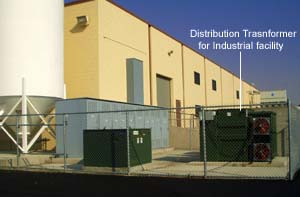
Additional information:
- The Lineman's and Cableman's Handbook, Shoemaker, T. M., Mack, J. E., Tenth Edition 2002, McGraw-Hill.
Commercial customers are usually served at distribution voltages, ranging from 14.4 kV to 7.2 kV through a service drop line which leads from a transformer on or near the distribution pole to the customer's end use structure. They may require 3-phase lines to power 3-phase motors.


The distribution electricity is reduced to the end use voltage (120/240 volts single phase) via a pole mounted or pad-mounted transformer. Power is delivered to the residential customer through a service drop line which leads from the distribution pole transformer to the customer's structure, for overhead lines, or underground.
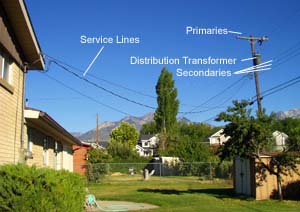

Currently the only electric transportation systems are light rail and subway systems. A small distribution substation reduces the local distribution voltage to the transportation system requirements. The overhead lines supply electric power to the transportation system motors and the return current lines are connected to the train tracks.





